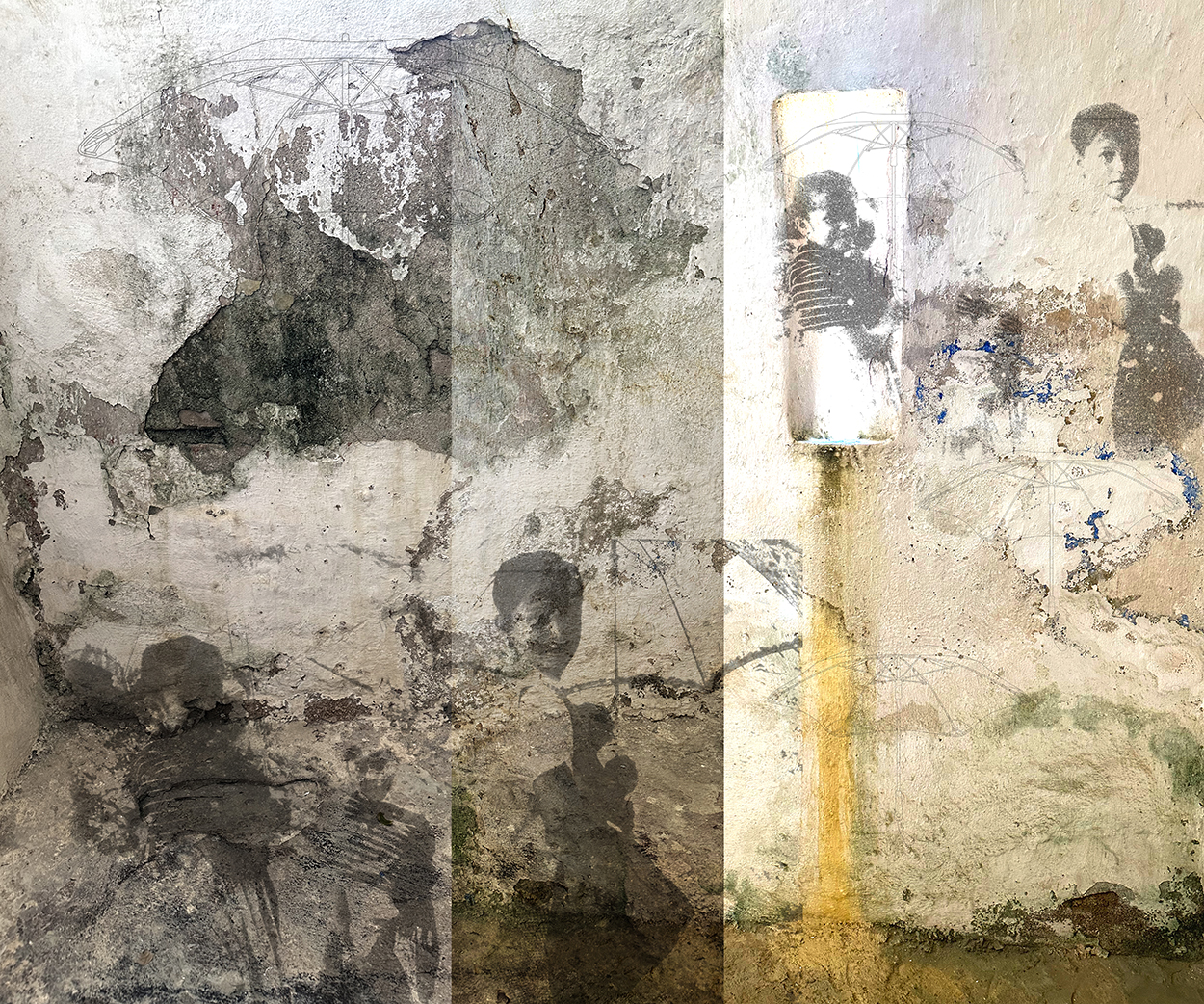2023-24 Talley Dunn Gallery Equity in the Arts Fellowship Exhibition
Nuestra Collective
Talley Dunn Gallery
June 22 – August 3, 2024
Nuestra Artist Collective, a collective of six women artists, collaborated to create new works of art for the Talley Dunn Gallery Equity in the Arts Fellowship exhibition. This year, our artists explored the theme of cultural assimilation, as it relates to individuals migrating to new countries and adapting to societal norms. Assimilation can take many forms, encompassing cultural, linguistic, social, and historical dimensions. Our work reflects these varied aspects, illustrating the complexity of the assimilation process. Working in pairs, we delved into the nuances of this experience, each bringing our unique perspectives to the table. A highlight of the exhibition is a pair of handmade books, crafted collectively by all members. These books focus specifically on language, with each artist offering a personal interpretation of the theme in the first book. Additionally, the second book features visual translations by other members, creating a rich tapestry of interwoven ideas and expressions. Our decision to collaborate on these artworks stems from our collective history of enriching and inspiring experiences through past joint projects. This exhibit reflects not only our individual artistic voices but also the strength and beauty of our collective synergy.
In their pairing, Lupita Murillo Tinnen and Tesa Morin activate the experiences of a variety of women who participate in Cultural Assimilation. The artists invite a diverse group of women to pose in settings and clothing of their choice, with the theme in mind. Participants show their ability to coexist in different social situations with multiple cultural identities. Depending on time and place, one might choose to be more illustrative of their culture of origin, more American, more traditionally female, more sports fan, more professional, more motherly, more beautiful, more invisible, or more authentic to their own personality. Each image includes layered photographs of the women interacting with their clothing, environments, or others in the scene. The artists intentionally survey an array of women of different backgrounds, ages, relationships, and explore the current state of Americana and the subjects’ places in it.
Eliana Miranda and Tina Medina worked alongside each other on three large canvases, entitled Uprooted Raices. Making each decision and mark together, the artists blended their stylistic characteristics to create figurative works that speak to the source of assimilation. Larger than life families of women and children take center stage with some figures replaced by silhouetted maps of the world. The root sections at the bottom of the installation signify the connection, now broken through migration, that families make to the land, the culture and each other. In their work, Miranda and Medina are referencing the migratory history of families throughout centuries. Escaping violence, poverty and hoping to provide a better life for their families, parents make huge sacrifices to make dangerous journeys. Making up half of the world’s migrants-women, the carriers of culture, tradition and customs, leave their home countries because of gender inequality. The act of migration often comes with far-reaching consequences, cutting deep cultural and familial ties that affect generations to come.
Multidisciplinary artist Michelle Cortez Gonzales and dancer Sara Herrera articulate their Mexican American experience with assimilation and a hybrid identity as a result. The structure, composed of paint, found materials, and fabric, resembles a home facade. Painted white to blend in with the gallery walls, the only color emerges from hand-painted fabric referencing Mexican oil tablecloths and the intimate space they create for conversation, nourishment, and comfort. The fabric, known for its durability and strength, bursts through the sides and cracks of the whitewashed wood signifying the interplay and tension between the internal and external, whether of self, or navigating the boundaries of public versus private. At the heart of the installation is a 9-minute video montage that offers a window into the past, honoring and preserving cultural history through the power of storytelling. The first segment features a woman embroidering a Texas bluebonnet, recounting a story about a Singer sewing machine’s link to proving U.S. citizenship. Still imagery intertwines with photos of Cortez Gonzales’ relatives and music from her father’s band. The second and third clips by Herrera serve as a tribute to her memories of home, the love for her family, and her connection with her roots. Herrera’s performative dance depicts her immersed in a scene from her grandparents’ home, conveying feelings of consistently being transported there regardless of her whereabouts. Interno Externo stands as a testament to resilience, inviting reflection on the importance of cultural identity and the enduring impact of storytelling in the face of adversity.
Talley Dunn Gallery strongly believes in creating opportunities for racial equity in the arts community. The Talley Dunn Gallery Equity in the Arts Fellowship strives to foster the development of Black and Indigenous artists and other artists of color in North Texas, whose artmaking forms the backbone of our cultural landscape. In line with Talley Dunn Gallery’s longstanding commitment to anti-racism in our community, the gallery pledges to provide the fellowship with a minimum of $30,000 of funding over five years with the hope that it continues indefinitely. This fellowship will be just one component of a larger vision for programming and resources the gallery will invest in supporting Black and Indigenous artists and other artists of color.
Art institutions are complicit in the conscious and unconscious ways artists of color have been denied equal access to resources for success in the arts. These social inequalities can only be remedied with explicit actions to structurally change our unspoken norms. Talley Dunn Gallery acknowledges the social and economic injustices artists of color face and is committed to advancing racial equity through the support of those whose voices are vital in our communities.







